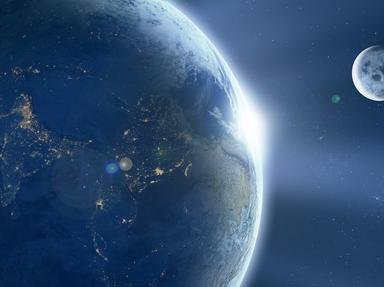Quiz Answer Key and Fun Facts
1. Mercury is covered with a particular type of low-angle fault known as a thrust fault. What was the likely reason the thrust faults formed?
2. Mechanical and chemical weathering from water forms most of the dust on the Earth. What produces dust on bodies which obviously lack water, like Mercury and the Moon?
3. Much ado is made about the extreme greenhouse effect on Venus, and how the Earth could end up like Venus if humans continue pumping out greenhouse gasses. However, the risk of the Earth turning into Venus is actually fairly small. The Earth-- but not Venus-- has a nice and convenient feature that can trap a good bit of a planet's supply of carbon dioxide. What is it?
4. Venus is still geologically active. However, instead of plate tectonics, the planet seems to periodically recycle its entire crust! What is the evidence for this?
5. The moon has earthquakes (should that be moonquakes?)
6. The lunar maria (the dark areas) and the lunar highlands (the light areas) are made up of different types of rocks. The highland areas are mostly anorthosites. What are the maria made of?
7. Olympus Mons is the largest volcano (and largest mountain) in the entire solar system. On Earth, there are two types of volcanoes-- gently sloping shield volcanoes, like the Hawaiian Islands, and steep-sided cinder cone volcanoes, like Mount Vesuvius and Mount Saint Helens. Which type is Olympus Mons?
8. Today, Mars does not have an appreciable magnetic field, like the Earth. However, there is evidence that Mars had a magnetic field at some time in the past. What is the evidence for this?
9. Valles Marineris on Mars is the largest valley in the solar system. It is 5 to 7 km deep and about as long as the United States. Geologically speaking, what sort of valley is it?
10. Asteroids in the asteroid belt can be made of several types of rocks. Which is NOT one of these?
Source: Author
pu2-ke-qi-ri
This quiz was reviewed by FunTrivia editor
crisw before going online.
Any errors found in FunTrivia content are routinely corrected through our feedback system.
